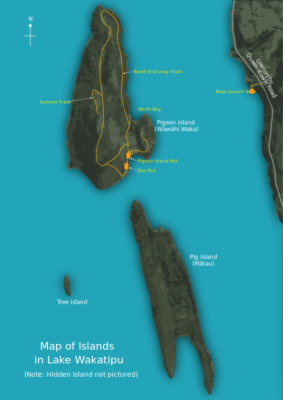Weka are largish, robust-looking and with a keen curiosity that suggests they’re no birdbrains. They’re also opportunist pilferers if there’s chook food around or even leftovers in the dog’s bowl. They’re tough enough that in some cases they’ve had to be eradicated from offshore islands because of their predation on more vulnerable native birds.

So weka are not an easy target you’d think, even for mammal predators. Yet they’ve disappeared from large areas of New Zealand and struggle on in many other places. Starvation during drought can be part of the problem – but so are predators. Could weka survive reintroduction to areas of the South Island mainland where they used to thrive, if predator control was regularly carried out? University of Otago researchers investigated.

“The buff weka (Gallirallus australis hectori), a flightless rail, was reintroduced to an unfenced mainland island on New Zealand’s South. Past reintroductions on the mainland have all failed, but lack of post-release monitoring has meant the exact cause and timing of failures is unknown. We investigate the ability of buff weka to establish a mainland population in conjunction with high intensity predator control.”
The results of this research have been published in Austral Ecology, where only the abstract is freely available. Jim Watts’ Masters thesis, on which the research paper is based, is however, freely available through the University of Otago’s ‘Our Archive’ website.
There are only so many safe, ecologically diverse offshore island habitats where our native species can live in safe isolation – and more aggressive native species such as weka aren’t always welcome on such island sanctuaries. So what can be done to help species like buff weka reintroduce successfully on the mainland – and what do we know about the reasons why such introductions have failed in the past?
“While there have been significant conservation successes through restoration of island biodiversity following the eradication of invasive predators, a major challenge remains to reintroduce native species within larger mainland systems that support suites of introduced mammalian predators. Strategies to enhance establishment and persistence of reintroduced populations include pre-release management to reduce post-release dispersal, and habitat restoration such as predator control at release sites. Evaluation of such strategies critically requires strategic and intensive post-release monitoring to identify drivers of success or the specific causes of failures.”
Buff weka currently thrive on predator-free islands in Lakes Wanaka and Wakatipu. According to the Queenstown Lakes District Council website, the buff weka disappeared from the mainland in the 1920’s due to predators and habitat loss. In 2002, 30 weka were transferred from the Chatham’s to Stevenson’s Island, Lake Wanaka. After successful breeding seasons, the project was extended to Lake Wakatipu with weka released on Pigeon and Pig islands in 2006 and 2008 respectively. These weka were the source of the monitored translocation experiment.
“Nineteen buff weka (15 males, 4 females) were transferred from predator-free islands in Lake Wakatipu, South Island, to Motatapu Station and held in a pre-release enclosure for 6 weeks. Using a combination of very high frequency (VHF) and Global Positioning System (GPS) telemetry, released birds were monitored every 2 days for 4 months post-release.”
Keeping the birds in an enclosure prior to release seems to have helped anchor them to the release site – or perhaps there was plenty of food and no need to disperse further, as that aspect of the release seems to have worked well.
“Following release, no buff weka dispersed off Motatapu Station. Survival, however, was low and by the end of the study, 12 (63%) buff weka had been predated by introduced mustelids, ferrets (Mustela furo) and stoats (Mustela erminea). The lack of dispersal by buff weka suggests the presence of favourable resources on Motatapu Station. However, the low survival rate indicates that the predator-trapping network was insufficient to suppress predator numbers to a level low enough for buff weka population persistence.”
It was a sad end to the experiment and suggests that even when your bird is relatively large, robust, inquisitive and feisty – and you carry out trapping – it may not be enough to prevent surviving predators from significantly impacting the release population.
“The low survival rate indicates that the existing predator-trapping network is not extensive or dense enough to maintain predator numbers at a level low enough for buff weka to coexist. Predation of buff weka was responsible for the overall failure of this reintroduction. These findings emphasize the challenges faced by New Zealand conservation managers in protecting threatened species in mainland areas. Unfenced mainland islands may be a viable alternative to the more expensive mainland approach of creating predator-proof sanctuaries, however; refinement of this technique will be necessary if threatened species recovery programmes are to meet the goal of establishing mainland populations in New Zealand.”
Trial reintroduction of buff weka to an unfenced mainland site in central South Island, New Zealand (2016) (abstract freely available)

